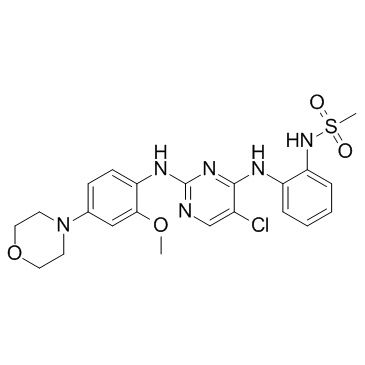
CZC-54252
CAS No. 1191911-27-9
CZC-54252( CZC-54252 | CZC 54252 | CZC54252 )
Catalog No. M10659 CAS No. 1191911-27-9
CZC-54252 is a potent inhibitor of LRRK2 with IC50s of 1.28 nM and 1.85 nM for wild-type and G2019S LRRK2 respectively.
Purity : >98% (HPLC)
 COA
COA
 Datasheet
Datasheet
 HNMR
HNMR
 HPLC
HPLC
 MSDS
MSDS
 Handing Instructions
Handing Instructions
| Size | Price / USD | Stock | Quantity |
| 10MG | 124 | In Stock |


|
| 25MG | 210 | In Stock |


|
| 50MG | 311 | In Stock |


|
| 100MG | Get Quote | In Stock |


|
| 200MG | Get Quote | In Stock |


|
| 500MG | Get Quote | In Stock |


|
| 1G | Get Quote | In Stock |


|
Biological Information
-
Product NameCZC-54252
-
NoteResearch use only, not for human use.
-
Brief DescriptionCZC-54252 is a potent inhibitor of LRRK2 with IC50s of 1.28 nM and 1.85 nM for wild-type and G2019S LRRK2 respectively.
-
DescriptionCZC-54252 is a potent inhibitor of LRRK2 with IC50s of 1.28 nM and 1.85 nM for wild-type and G2019S LRRK2 respectively.
-
In Vitro——
-
In Vivo——
-
SynonymsCZC-54252 | CZC 54252 | CZC54252
-
PathwayAutophagy
-
TargetLRRK2
-
RecptorLRRK2
-
Research AreaNeurological Disease
-
Indication——
Chemical Information
-
CAS Number1191911-27-9
-
Formula Weight504.39
-
Molecular FormulaC22H25ClN6O4S
-
Purity>98% (HPLC)
-
SolubilityDMSO: 100 mM
-
SMILESCS(=O)(NC1=CC=CC=C1NC2=NC(NC3=CC=C(N4CCOCC4)C=C3OC)=NC=C2Cl)=O
-
Chemical NameN-(2-((5-chloro-2-((2-methoxy-4-morpholinophenyl)amino)pyrimidin-4-yl)amino)phenyl)methanesulfonamide
Shipping & Storage Information
-
Storage(-20℃)
-
ShippingWith Ice Pack
-
Stability≥ 2 years
Reference
1.Liu F, et al. J Pharmacol Exp Ther, 2008, 327(3), 827-839.
molnova catalog



related products
-
GNE-7915 tosylate
GNE-7915 tosylate (GNE7915 tosylate) is a highly potent, selective, and brain-penetrable LRRK2 inhibitor with IC50 of 1.9 nM.
-
PF-06454589
PF-06454589 is a potent inhibitor of LRRK2.
-
LRRK2-IN-1
A potent LRRK2 inhibitor with IC50s of 13 nM/6 nM for wild-type/G2019S mutant LRRK2 repectively (0.1 mM ATP in the assay).



 Cart
Cart
 sales@molnova.com
sales@molnova.com


